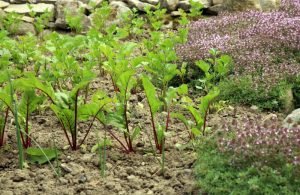Last Updated on November 6, 2025 by teamobn
A healthy Venus flytrap is surprisingly easy to maintain once you meet its very specific needs: pure water, strong light, nutrient‑free soil, and a real winter rest. Use this complete, step‑by‑step guide to set yours up for long life and vigorous traps.
Key Takeaways
Contents
- Light: 4–6+ hours of direct sun daily; or 12–16 h under full‑spectrum LED indoors.
- Water: Distilled, RO, or rain only; TDS under 50 ppm. Keep soil evenly moist.
- Soil: 1:1 sphagnum peat moss : perlite (no fertilizer, compost, or “enriched” mixes).
- Pot: Plastic or glazed ceramic with drainage; avoid unglazed clay. Repot annually.
- Feeding: 1–2 small live insects/month in the growing season; max 1/3 of trap size.
- Dormancy: 3–4 months at 35–50°F (2–10°C); reduce watering; expect blackened traps.
- Do not fertilize; do not trigger traps for fun; cut flower stalks to conserve energy.
Quick Answers
- How much sun? At least 4–6 hours of direct sun daily.
- What water? Distilled, RO, or rainwater with TDS < 50 ppm.
- Best soil? 1:1 peat moss and perlite; never use standard potting soil.
- Fertilizer? No—will harm Venus flytraps.
- Do they need dormancy? Yes—3–4 months at 35–50°F (2–10°C).
- How often to feed? 1–2 small insects per month in season; plant can also self-catch.
- Why are traps turning black? Normal aging or dormancy; overfeeding can accelerate—trim dead growth.
What Is a Venus Fly Trap?
The Venus flytrap (Dionaea muscipula) is a carnivorous plant native to the subtropical wetlands of North and South Carolina in the United States. It’s best known for its jaw-like leaves that snap shut when triggered by the movement of unsuspecting insects.
This dramatic trapping mechanism evolved as a survival strategy in nutrient-poor soil. Instead of relying solely on the ground for nourishment, the plant absorbs essential nutrients from its prey, which usually includes flies, spiders, and small beetles.
Each trap has tiny, sensitive hairs on the inside surface. When an insect touches these hairs twice in quick succession, the trap closes, forming a seal around the prey. The plant then releases digestive enzymes to break down the insect and absorb the nutrients over several days.
Once digestion is complete, the trap reopens and is ready to catch another meal. This cycle can repeat a few times per trap before that part of the plant dies back, allowing new traps to form as the plant grows, enhancing it’s role in professional pest control..
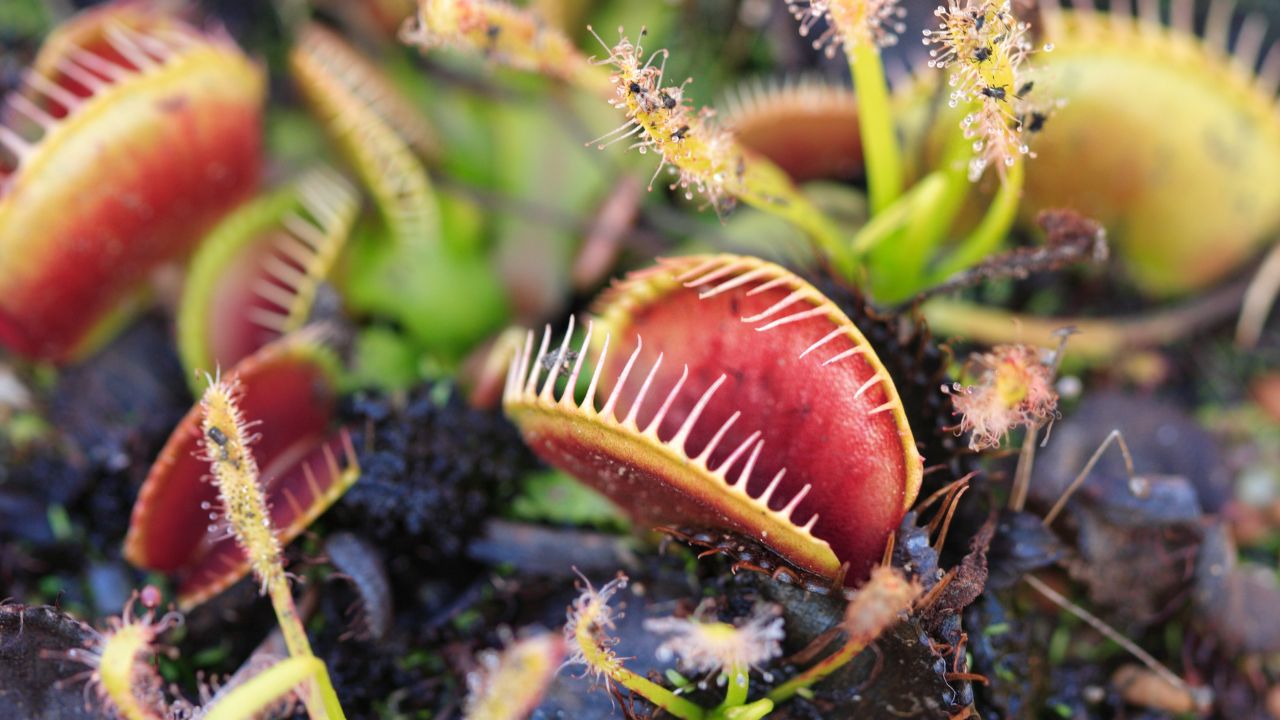
Complete Guide to Venus Fly Trap Care
Venus fly traps are unlike most houseplants. Their needs are specific and unforgiving at times, but once you understand their rhythm, they’re easy to care for and incredibly rewarding. This guide covers everything you need on how to take care for a Venus fly trap.
Soil and Potting Requirements
Venus flytraps evolved in nutrient‑poor bogs and are sensitive to minerals and fertilizers.
- Soil mix: 1:1 sphagnum peat moss : perlite (or silica sand). No compost, manure, bark, or added fertilizer.
- Pot: Plastic or glazed ceramic with drainage holes. Avoid unglazed clay (leaches minerals).
- Depth: 4–6 inches to allow root development.
- Repotting: Every spring (or at least annually) into fresh mix.
Pro tip: Rinse perlite thoroughly before mixing to reduce dust and residual minerals.
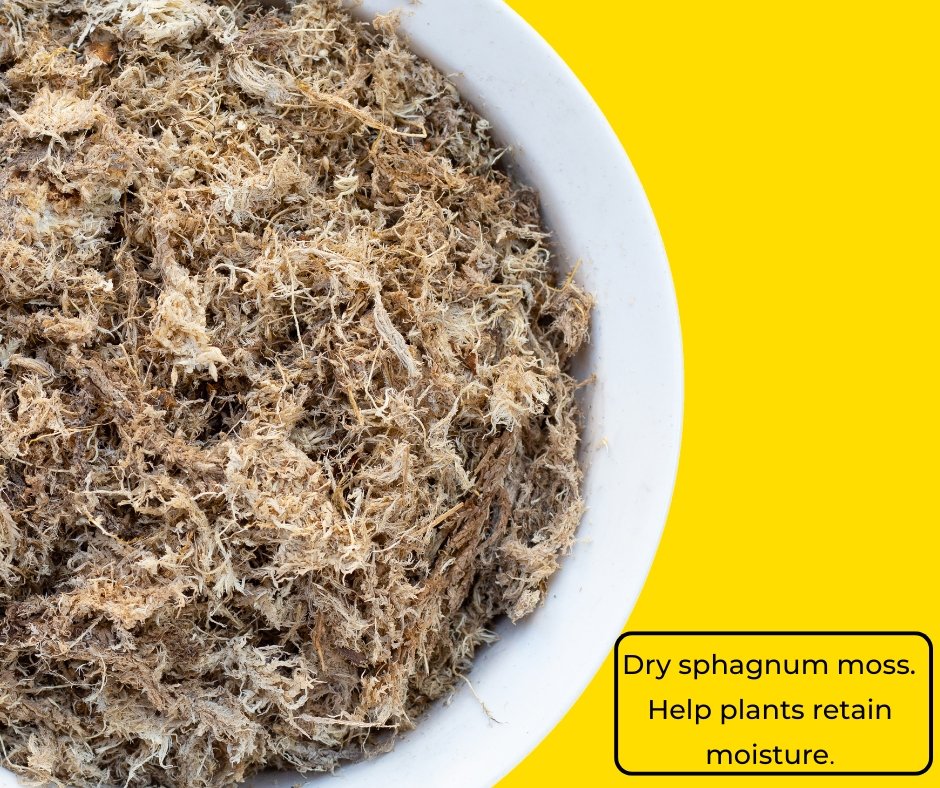
Watering and Moisture Control
Tap water isn’t safe for Venus fly traps. These plants are extremely sensitive to dissolved minerals like calcium, magnesium, and chlorine.
Use only mineral‑free water.
- Water type: Distilled, reverse osmosis (RO), or rainwater; target TDS < 50 ppm.
- Moisture: Keep evenly moist—not waterlogged. Let the top 0.5–1 cm of the surface begin to dry between waterings.
- Tray method: In hot months, keep 0.5–1 cm water in a tray beneath the pot; allow the tray to dry out periodically in cooler months.
- Airflow: Ensure good air movement to reduce mold and algae on the soil surface.
Sunlight and Light Exposure
Sunlight is vital for Venus fly traps.
- Outdoors: 4–6+ hours of direct sun is ideal; morning and midday sun produce robust traps with red interiors.
- Indoors: Use a full‑spectrum LED grow light for 12–16 hours daily. Keep the light close enough for strong, compact growth (adjust height to avoid leaf scorch).
- Signs of low light: Long, weak leaves and small, pale traps.
Feeding and Nutrition
One of the biggest misconceptions is that Venus flytraps need to be fed often. In reality, they don’t need many insects to stay healthy. A well-lit plant that catches the occasional bug is fine.
If you’re growing your plant indoors and it doesn’t catch its own prey, you can feed it small insects like flies, ants, or crickets. Avoid feeding it human food, meat, or anything larger than one-third the size of the trap.
Feed only live or freshly killed insects. The trap needs to sense movement to trigger full digestion. If you hand-feed a dead insect, gently stimulate the tiny hairs inside the trap using a toothpick or tweezers. One or two bugs per month is enough during the growing season.
Never force a trap closed just for fun — it wastes the plant’s energy and shortens the life of that trap.
Understanding Dormancy
A true winter rest is required for long‑term health.
- Timing: ~3–4 months each winter.
- Temperature: 35–50°F (2–10°C).
- Appearance: Traps and leaves blacken and die back; growth pauses.
- Watering: Reduce; keep soil just lightly moist—never bone dry.
- Locations: Cool bright window, unheated porch/garage, or cold frame. Short periods in a refrigerator drawer can supplement cool hours if needed (roots must not dry out).
Common Mistakes to Avoid
- Using tap water
- Tap water often contains minerals and chemicals like chlorine, fluoride, and calcium that can build up in the soil and damage the plant’s roots.
- How to avoid it:
- Always use distilled water, rainwater, or reverse osmosis water. These options are free of harmful minerals and safe for Venus fly traps.
- Using regular potting soil
- Standard potting mixes often contain fertilizers or compost, which will overwhelm and kill a Venus flytrap.
- How to avoid it:
- Use a mix of sphagnum peat moss with either perlite or silica sand. Never use soil with added nutrients or “moisture control” features.
- Overfeeding the plant
- Too many feedings can stress the plant and cause traps to rot. The plant doesn’t need frequent meals to stay healthy.
- How to avoid it:
- Feed your Venus fly trap once every few weeks during the growing season. Only one trap at a time needs to be fed. Choose insects that are no larger than one-third the size of the trap.
- Feeding it human food
- Raw meat, cheese, and other human foods will rot inside the trap and cause fungal infections. The plant cannot digest processed food.
- How to avoid it:
- Only feed your Venus flytrap live or freshly killed insects like flies, spiders, or small crickets.
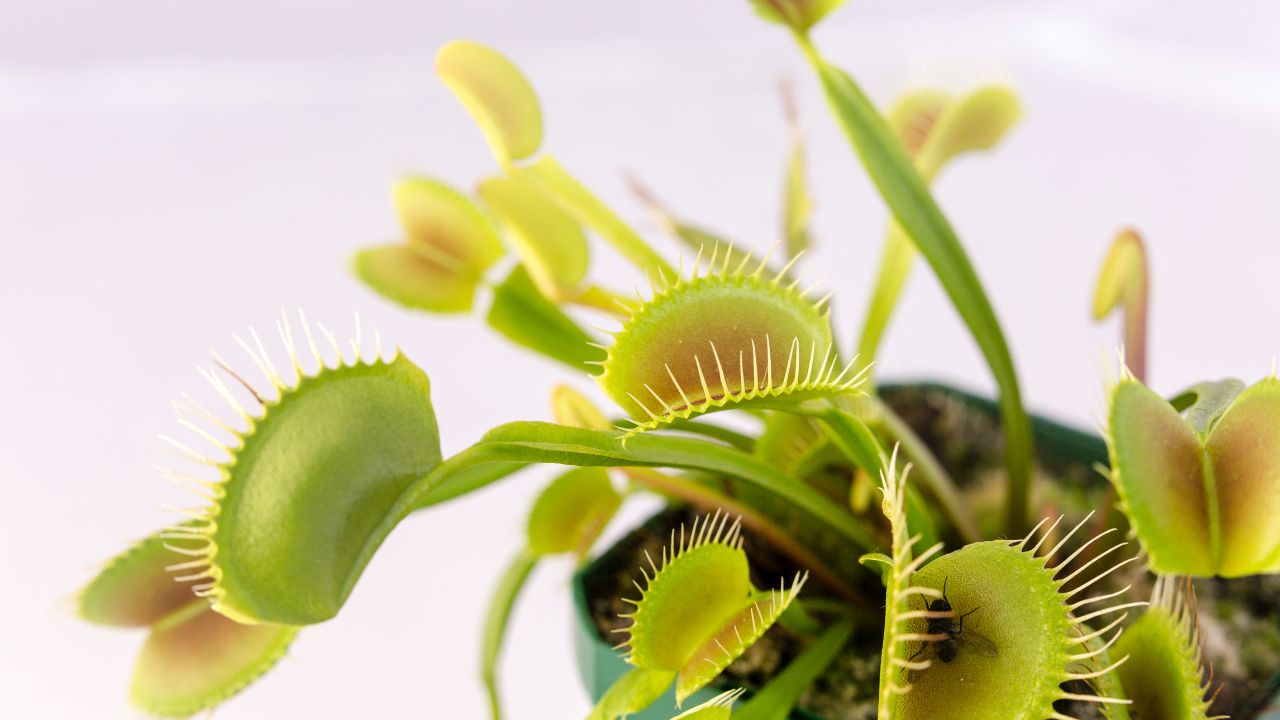
- Forcing the traps to close
- Manually triggering the traps just to watch them close wastes the plant’s energy. Each trap can only close a few times before dying off.
- How to avoid it:
- Avoid touching the traps unless you’re feeding the plant. Let the plant do its job naturally.
- Not providing enough light
- Without strong light, the plant can’t produce energy. Traps will become small, weak, or stop forming entirely.
- How to avoid it:
- Give the plant at least 4 to 6 hours of direct sunlight daily. If natural light is limited, use a full-spectrum grow light for 12 to 16 hours a day.
- Skipping dormancy
- Venus flytraps need a winter rest period. Without it, they’ll become weak and may not survive long term.
- How to avoid it:
- Allow your plant to go dormant during the colder months. Reduce light and watering, and keep it in a cool spot between 35°F and 50°F (1.5°C to 10°C) for 3 to 4 months.
- Keeping the soil too wet or too dry
- Soggy soil can lead to root rot. Dry soil can cause the plant to dehydrate quickly.
- How to avoid it:
- Keep the soil moist, not soaking. Let the top layer dry slightly before watering again, especially during dormancy.
When cared for properly, Venus fly traps can live for 20 years or more. Divide the plant every few years if it outgrows its pot. You’ll notice multiple rosettes forming at the base, and you can gently separate and repot them.
Remove dead leaves and blackened traps regularly to prevent mold and allow energy to go to new growth. If you’re growing outdoors, protect the plant from extreme weather like frost or heavy rain. A cold frame or greenhouse can help. Indoors, make sure it doesn’t sit in a drafty or overheated spot.
With attention to its basic needs, your Venus fly trap will reward you with striking growth and those mesmerizing, snapping traps.
Troubleshooting: Symptom → Likely Cause → Fix
- Traps turning black quickly
- Cause: Normal aging, dormancy onset, or overfeeding/oversized prey
- Fix: Reduce feeding; remove dead traps; verify dormancy timing
- Weak, pale growth; tiny traps
- Cause: Insufficient light
- Fix: Increase direct sun or LED intensity/duration
- Mold or green algae on soil surface
- Cause: Constant saturation, poor airflow
- Fix: Let surface dry slightly between waterings; improve airflow; consider top‑dressing with rinsed sand
- Traps don’t close fully
- Cause: Low energy from poor light; repeated false triggers; old traps
- Fix: Improve light; avoid touching traps; allow new growth to replace old traps
- Decline indoors despite water/soil
- Cause: Not enough light; air too dry; no dormancy
- Fix: Stronger grow light; plan for winter dormancy; moderate humidity with airflow
- Brown leaf tips or salt crust
- Cause: Mineral buildup from water or pot
- Fix: Switch to distilled/RO/rain; repot; avoid unglazed clay
Maintenance and Propagation
- Grooming: Trim dead/black traps and leaves at their base to direct energy to new growth.
- Flower stalk: Cut early in spring to conserve energy unless you want seeds.
- Division: Every 1–2 years when multiple rosettes form. Separate gently and repot.
- Pests/disease: Watch for aphids and botrytis (gray mold). Improve airflow and isolate if needed.
Types of Venus Fly Traps
Venus fly traps may all share the same insect-snapping charm, but there are many different cultivars with unique appearances and traits. These variations come in color, size, trap shape, and even growth habit. Some are great for beginners, while others appeal more to collectors looking for rare or dramatic features.
Here’s a list of popular and distinctive types of Venus fly traps available to home growers:
- Typical (Green Form)
This is the standard variety you’ll find in most garden centers. It has green leaves and traps with a slight reddish interior when grown in bright light. It’s a hardy, reliable choice for beginners. - ‘Akai Ryu’ (Red Dragon)
Known for its deep red coloration throughout the leaves and traps. It needs strong sunlight to maintain its bold color. A visually striking option for growers who want something different. - ‘B52’
Famous for producing some of the largest traps of any variety. The traps are often a bright red inside with strong green leaves. It’s a fast grower and a favorite among enthusiasts. - ‘King Henry’
Another large-trap cultivar, but with broader leaves and an aggressive growth pattern. This variety performs well outdoors and can grow larger than typical fly traps under the right conditions. - ‘Fused Tooth’
Named for its strange-looking traps with partially fused “teeth” along the edge. The result is a deformed but fascinating appearance. It’s less common and popular among collectors. - ‘Dentate Traps’
This variety features short, tooth-like spikes instead of long eyelashes on the trap edges. It has a more compact and geometric look and is relatively easy to grow. - ‘Green Dragon’
A sibling of the Red Dragon, but with green leaves and red traps. The contrast gives it a unique and vibrant look, especially in bright conditions. - ‘Sawtooth’
Recognized for its serrated, saw-like teeth and uniform trap shape. It’s a vigorous grower and one of the most distinctive cultivars available. - ‘Wacky Traps’
An unusual cultivar with slow growth and irregular, almost mutated-looking traps. It’s best suited for experienced growers who want to add something rare and odd to their collection. - ‘Coquillage’
This compact variety has small, clam-shell-like traps and short teeth. It’s a quirky-looking plant that doesn’t grow very large, making it ideal for tight spaces or small pots.
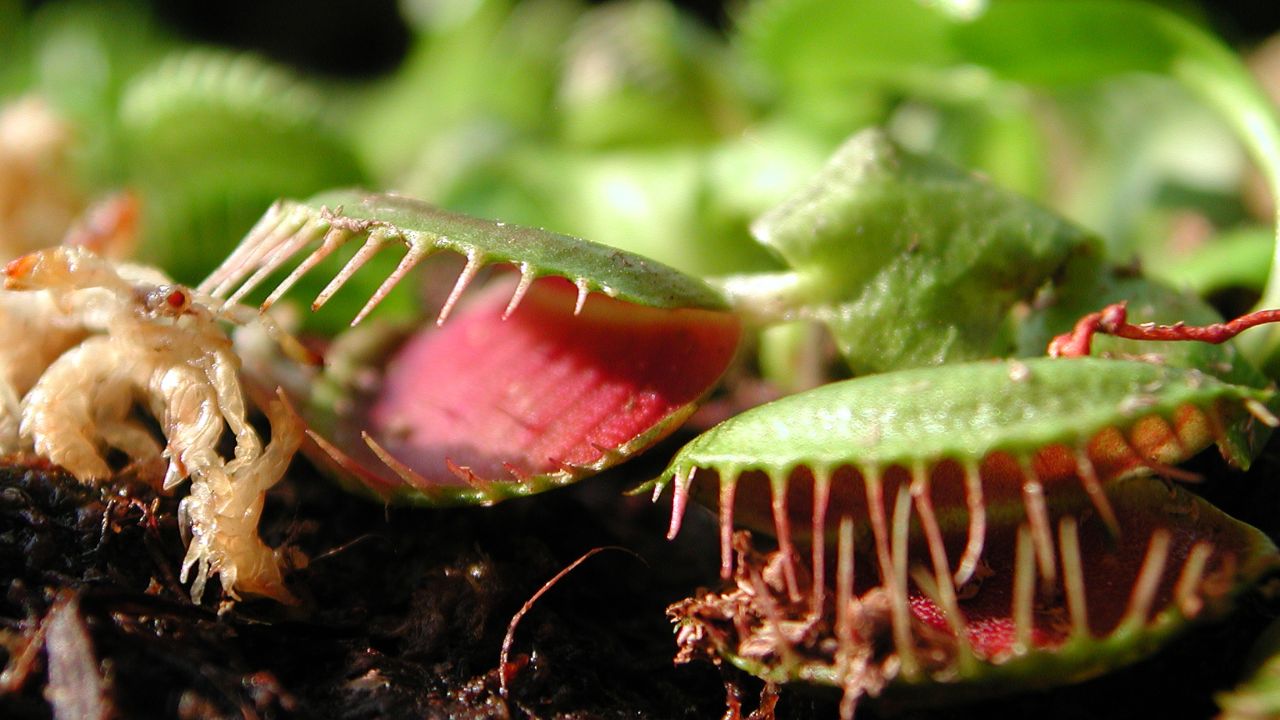
Benefits of Growing a Venus Fly Trap at Home
Adding a Venus fly trap to your home isn’t just about owning a cool-looking plant. These carnivorous plants offer real benefits that go beyond their exotic appearance. They’re functional, educational, and surprisingly low-maintenance when cared for correctly. Here’s why a Venus fly trap can be a smart and fun addition to your space:
Natural Pest Control
One of the most practical advantages is its ability to trap and digest small insects like flies, gnats, and spiders. While it won’t eliminate every bug in your home, it can help reduce the population of flying pests in a localized area. It’s an organic solution that doesn’t rely on chemicals or sprays.
Educational and Fascinating for All Ages
Watching a Venus fly trap in action sparks curiosity. It’s a living example of how plants can adapt and evolve in extreme environments. Kids and adults alike can learn about plant biology, ecosystems, and natural processes just by observing how the traps work. It’s also a great teaching tool for introducing young gardeners to plant care.
Unique Decorative Appeal
Venus fly traps bring a touch of the unusual to your plant collection. Their alien-like appearance, motion-sensitive traps, and vivid coloring make them stand out from traditional houseplants. Whether displayed on a windowsill or in a terrarium, they’re guaranteed to grab attention and add personality to any space.
Conversation Starter and Collector’s Item
Because of their rarity in home settings, Venus fly traps often become the centerpiece of plant conversations. For collectors, they also open the door to dozens of cultivars with different sizes, shapes, and colors. The more you explore, the more rewarding the hobby becomes.
Low Nutrient Needs
Unlike most plants, Venus fly traps thrive in nutrient-poor environments. They don’t require fertilizing and do best in plain, unfertilized peat mixes. As long as you provide proper water and light, their needs are fairly minimal compared to high-maintenance houseplants.
Bringing a Venus flytrap into your home means more than just owning a novelty. It offers functional value, a chance to learn, and a refreshing alternative to typical indoor greenery.
Frequently Asked Questions
- Can I use tap water?
- Only if verified under 50 ppm TDS. Otherwise use distilled, RO, or rainwater.
- Do Venus flytraps need fertilizer?
- No. Fertilizer will burn roots and can kill the plant.
- Are terrariums good?
- Sealed terrariums often fail without very strong light and airflow. Open containers with great light work better.
- Can I skip dormancy indoors?
- No — plants weaken and usually decline without a 3 to 4 month cool period.
- How long do they live?
- With proper care and yearly dormancy, decades.
- Is it normal for traps to die after closing?
- Each trap closes a limited number of times before aging out; new traps will replace them.
Conclusion
Caring for a Venus fly trap is simple once you understand its natural needs. With the right soil, water, light, and seasonal care, it will thrive for years. Avoid common mistakes like using tap water or feeding it improperly. Give it attention, and it will reward you with healthy growth and fascinating behavior.
Are you looking for an effective pest control solution for your home? Check out our pest control guide next!




